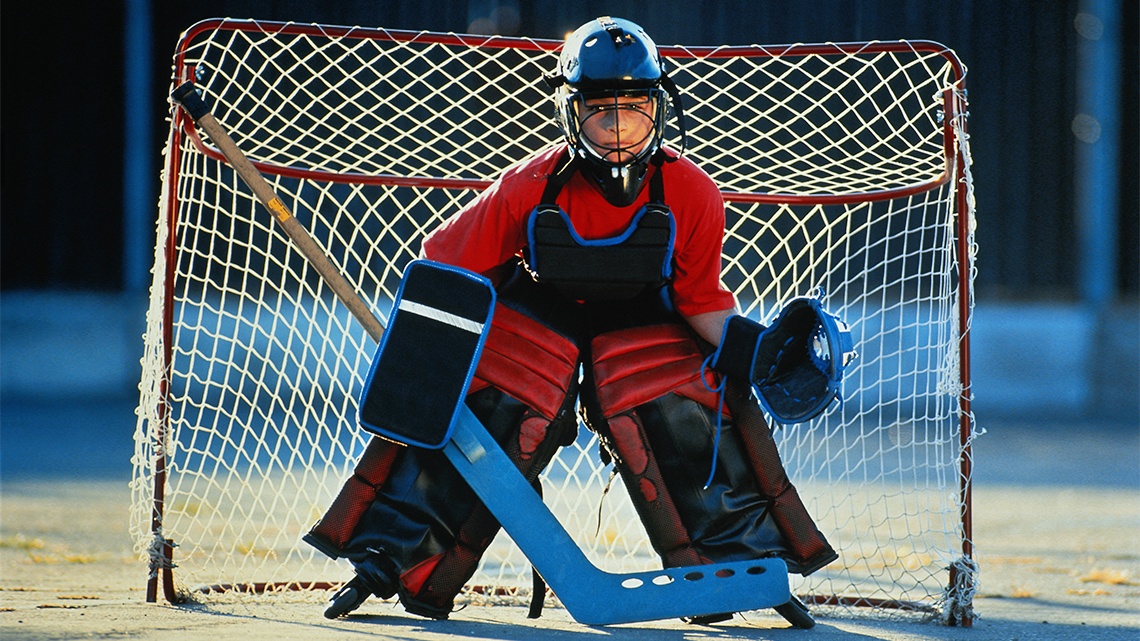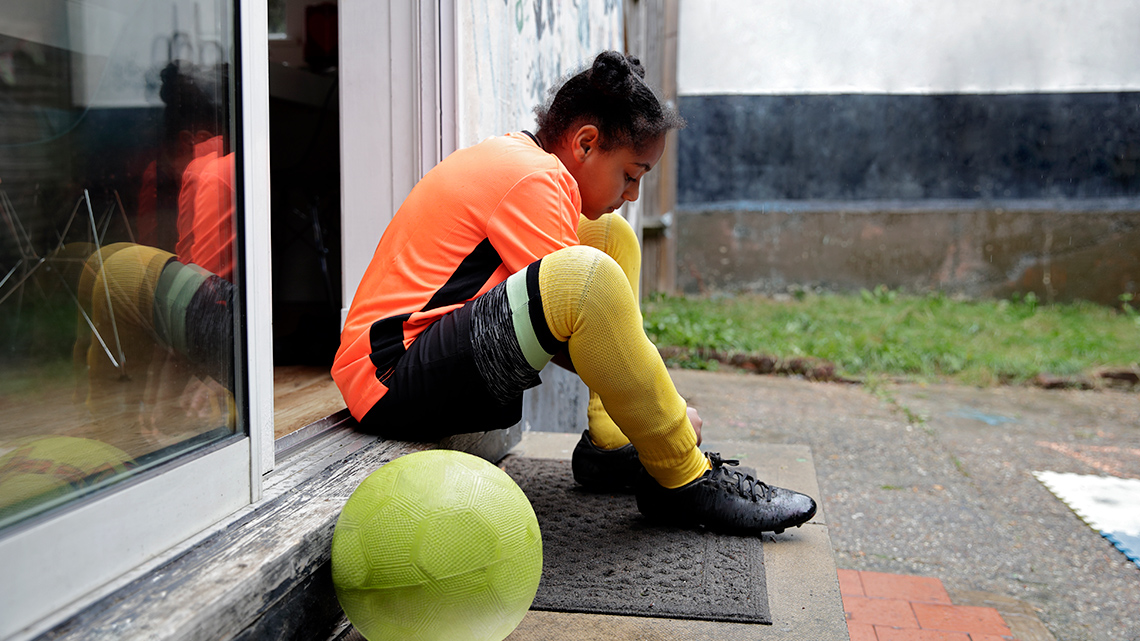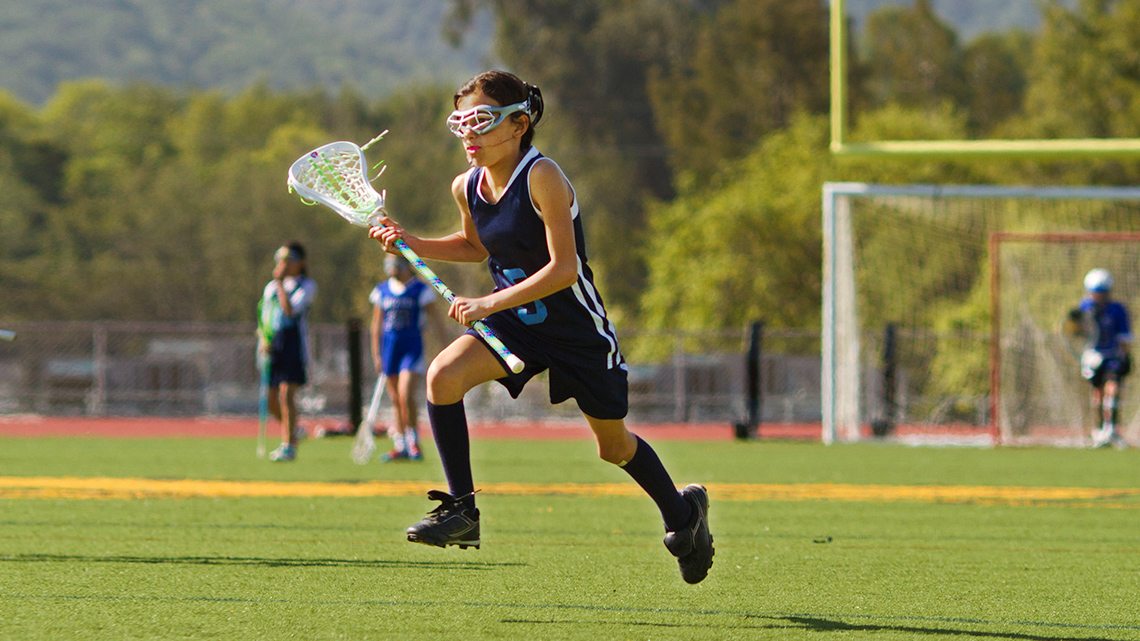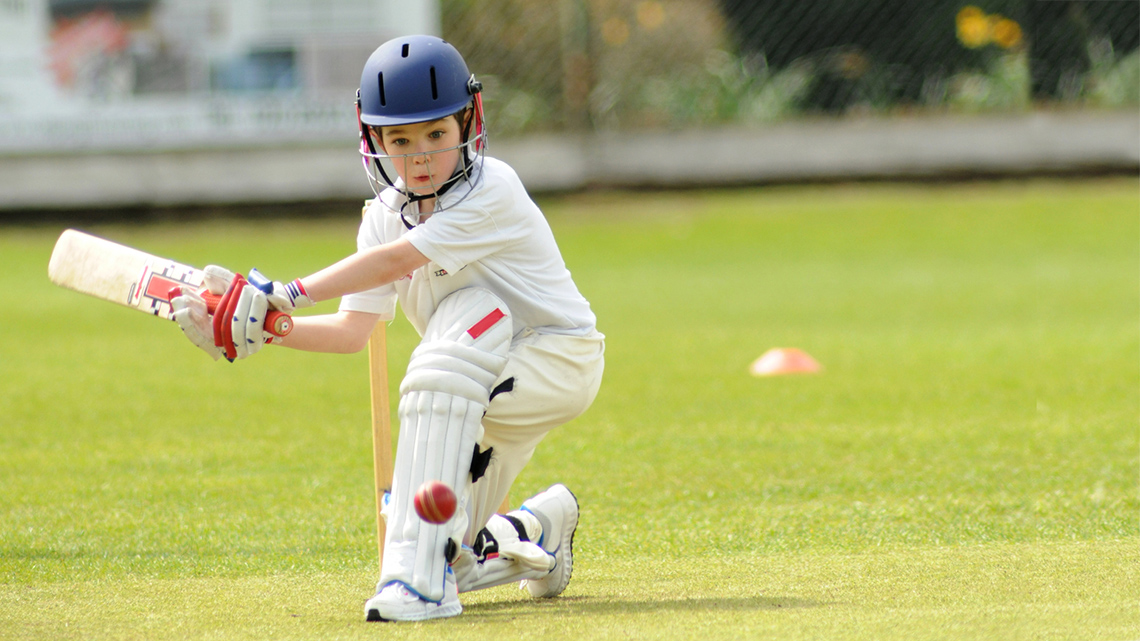Minds On
Exploring safety in sport

Have you ever noticed a swimmer wearing a helmet? Or a cyclist wearing shoulder pads? Or a soccer player wearing a lifejacket?
The safety equipment that players wear differs from sport to sport.
Explore the following images of the athletes.
- What are the players wearing?
- Why might the players need this equipment to play this sport safely?
- What purpose does it serve?
In the sport of white-water rafting, the paddlers need to protect themselves from two strong forces: The water, and the force of the rocks if they hit them at a travelling speed.
How many types of safety equipment can you notice in this video?
Action
Protective equipment
Innovation in Canada
This learning activity features emerging technologies, STEM contributions, and Canadian innovations that are making a difference.

Safety equipment is always under a cycle of continuous improvement. Engineers work with athletes and coaches and specialists in biomechanics who study how the body moves to improve safety equipment to better protect the body, while also allowing for better performance of the athlete.
Safety is very important while engaging in any activity where an injury can happen. In the Minds On images, there were different sports that were shown that included padding to keep the participants safe.
In the sports medicine field of study, individuals research the area of sports injuries and the protections needed for those who participate in different categories of sports. In many different sports there are situations where an object is thrown, kicked, or sent from one person to another.
What is some of the protective equipment that has been designed to protect participants in different sports?
Press the following tabs to access types of protective equipment.

Helmets are required in sports where there is a chance that a participant’s head is in danger of injury. Some examples of these sports include lacrosse, skateboarding, and cycling.
These helmets are especially designed and tested out for the particular impacts that may occur in this sport. That means that helmets used in some sports are different than other helmets.
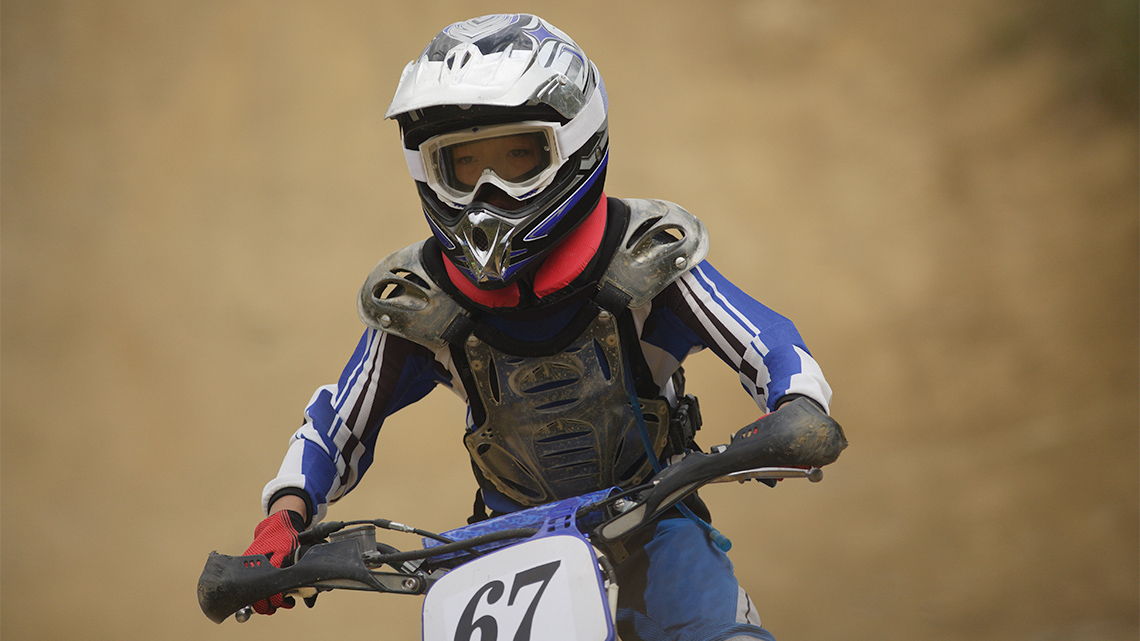
Protective eye wear comes in a wide variety. It may include sunglasses for sports like snowboarding or skiing. These would protect the eyes from the rays of the sun. Sports goggles are recommended for racquet sports where the force of the ball being struck can hit the eye at a high level of impact.
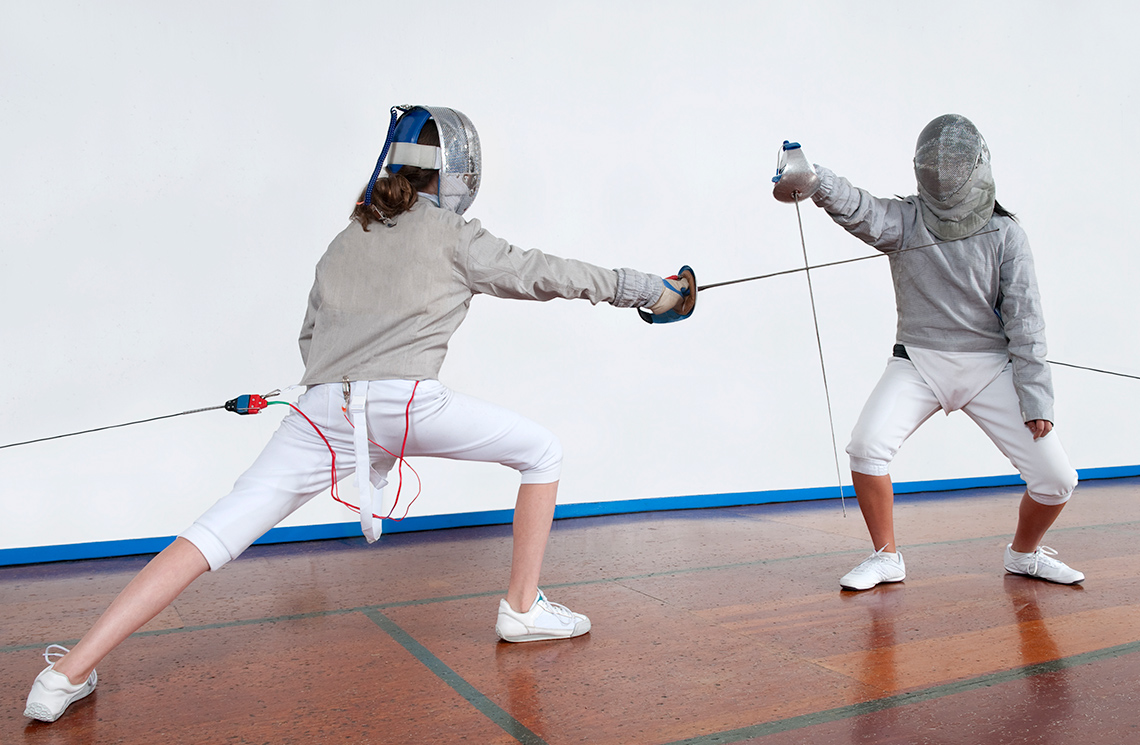
When participating in sports where facial injuries are common, such as baseball, cricket, boxing, fencing, and hockey, face protection and mouth guards are recommended. The mouth, gums, jaws, tongue, and teeth are areas that are vulnerable to impact from objects such as balls, pucks, or even gloves. Mouth guards need to made from durable material and fit the mouth properly.
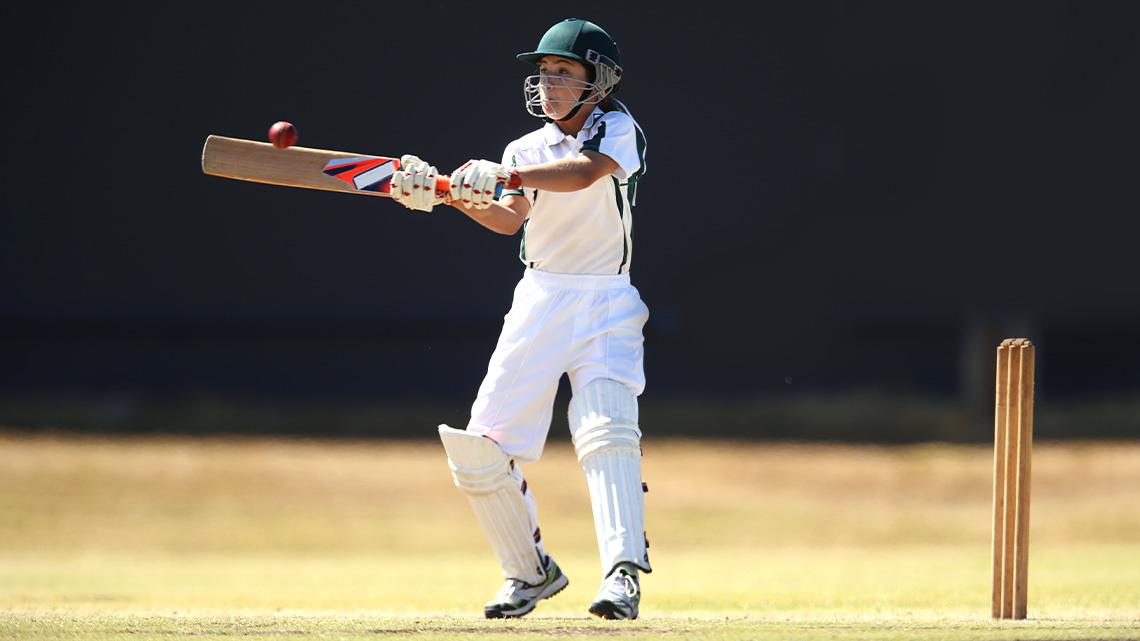
In any sport where there is contact, pads and guards are recommended to protect against injuries to shoulders, chest, ankles, shins, knees, arms, wrists, hips, and thighs. These guards are different depending on the sport. Some require soft padding made of material such as foam and others require hard plastic and protect from impact of a ball or puck or even human contact.
Check your learning!
Use your learning to answer these true or false questions.
Select the correct answer, then press ‘Check Answer’ to see how you did.
Protective padding
Padding absorbs some of the impact when contact is made.
What is padding made of?
Some of the most common padding materials include:
- foam placed inside the cover of the padding to absorb the impact. It is also used on the inside of helmets.
- gel that is placed inside the padding to absorb impact. This is often used to protect joint areas such as ankles and wrists, and hands.
- felt which can be used to create supports and protective pads
Egg drop design

Before a person begins playing a sport, there is potential energy in their body. It is energy that is ready to be used. As a person begins to move, potential energy is transformed into kinetic energy. The faster they move the more potential energy is transformed into kinetic energy.
If the person falls or collides with another, or with an object there is impact as the kinetic energy is released and/or transformed into heat and sound energy etc. The impact of energy being released ad transformed can hurt the body.
Note: Once the person stops moving completely, potential energy is once again stored in the body.
Protective equipment is meant to protect the human body in case of impact when performing sports or activities. However, even while wearing protective equipment there is still a chance of injury. Protective equipment helps a person to stay safe, but cannot offer complete protection for all types of impact.
Let’s consider how we might replicate this idea in the following task.
Imagine that you are an engineer asked to work on designing protective covering. You will be using an egg drop technique to test your protective covering. The first step in the process is to consider how energy will be transformed as the egg drops.
Egg energy
Imagine holding the protected egg up high.
At what point of the egg drop would energy be stored as potential energy?
When would the energy transform to kinetic energy?
Press ’Let’s Check’ to reveal a possible answer.
When the egg rests up high, the egg has potential energy
When falling, the egg has both kinetic energy and still has some potential energy
When the protected egg has reached the ground, it has potential energy

This is a panel of three images. The first image is of a person standing on a chair about to drop their egg. The egg is labelled as “potential energy”. The second image is of the egg falling and it is labelled as “potential and kinetic energy”. The third image the egg is on the ground show it has no potential energy.
The design task
Design a protective covering for an egg so that it can dropped from a height of about two metres without breaking.
Consider how an egg can safely be dropped from a height of 2 metres.
Before engaging in the Engineering Design Process to create your design, explore this video that outlines the process and all its steps:
When you are creating your plan and design, record your ideas in a method of your choice.
For this activity, you will not be building, testing, or improving your design.
Using the Engineering Design Process, create a design to protect your egg from a fall.
What materials will you use? Consider the examples of materials used in protective padding as inspiration. What will absorb the impact?
Materials could include sponges, cotton balls, marshmallows, packaging foam, Styrofoam packing peanuts, and bubble wrap.
Explore these examples of designs that other learners have created for their egg drop tasks:
Think about it!
Why did you choose the materials you did for your design? Explain your thoughts.
Consolidation
Let’s recap!

In this learning activity, we have explored how engineers work with athletes, coaches, sports officials, and specialists in biomechanics to create equipment that allows the athletes to perform their best and stay safe.
Let’s reflect
Reflect on the following questions and record your responses using a method of your choice.
- How did the egg drop design task relate to safety equipment used in sports?
- How did you choose the materials for your egg drop design?
- Why is it important for people participating in sports to wear protective equipment?
Reflection
As you read through these descriptions, which sentence best describes how you are feeling about your understanding of this learning activity? Press the button that is beside this sentence.
I feel…
Now, record your ideas using a voice recorder, speech-to-text, or writing tool.
Press ‘Discover More’ to extend your skills.
Discover MoreIf possible, build and test your egg drop design.
Reflect on your design. Which parts worked well? What did not work?
